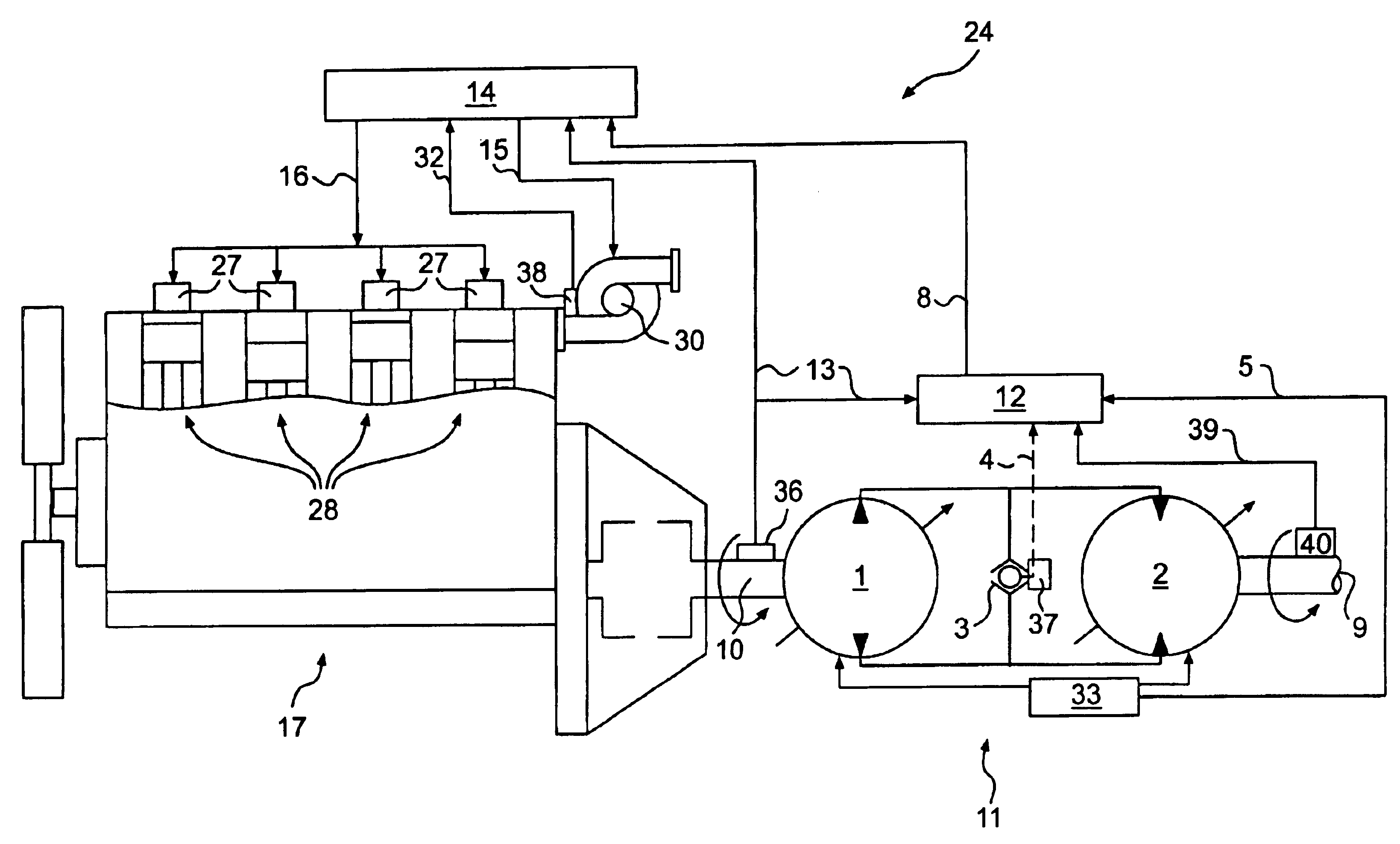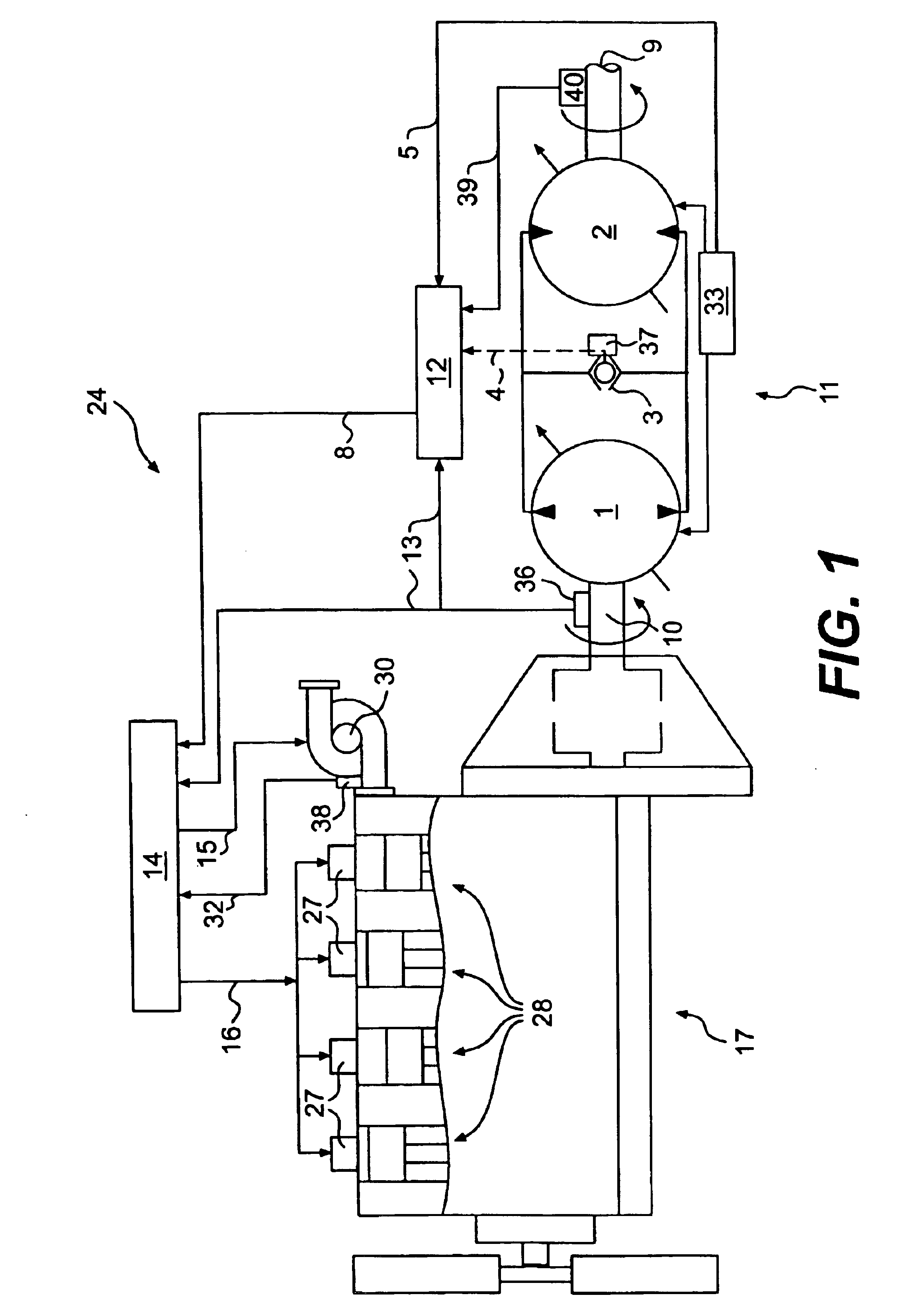System and method for predictive load management
a load management and load technology, applied in the field of load management systems, can solve the problems of excessive engine speed drooping, engine “stalling", engine speed drooping,
- Summary
- Abstract
- Description
- Claims
- Application Information
AI Technical Summary
Benefits of technology
Problems solved by technology
Method used
Image
Examples
Embodiment Construction
[0014]Exemplary embodiments of a predictive load management system are illustrated in FIGS. 1 and 2. The predictive load management system may be used, for example, with a power source 17 and a transmission 11. In the embodiments of FIGS. 1 and 2, the power source 17 is an engine, such as a turbo aspirated internal combustion engine. The engine may be a diesel engine, a gasoline engine, a natural gas engine, or any other engine readily apparent to one skilled in the art. The engine may also be naturally aspirated, supercharged, or have any other air induction system readily apparent to one skilled in the art. It is contemplated that the predictive load management system may be used with another type of power source such as, for example, a fuel cell.
[0015]As illustrated in FIG. 1, the power source 17 includes a plurality of combustion chambers 28. A fuel injector unit 27 is associated with each combustion chamber 28. In the illustrated embodiment, the power source 17 includes four co...
PUM
 Login to View More
Login to View More Abstract
Description
Claims
Application Information
 Login to View More
Login to View More - R&D
- Intellectual Property
- Life Sciences
- Materials
- Tech Scout
- Unparalleled Data Quality
- Higher Quality Content
- 60% Fewer Hallucinations
Browse by: Latest US Patents, China's latest patents, Technical Efficacy Thesaurus, Application Domain, Technology Topic, Popular Technical Reports.
© 2025 PatSnap. All rights reserved.Legal|Privacy policy|Modern Slavery Act Transparency Statement|Sitemap|About US| Contact US: help@patsnap.com



